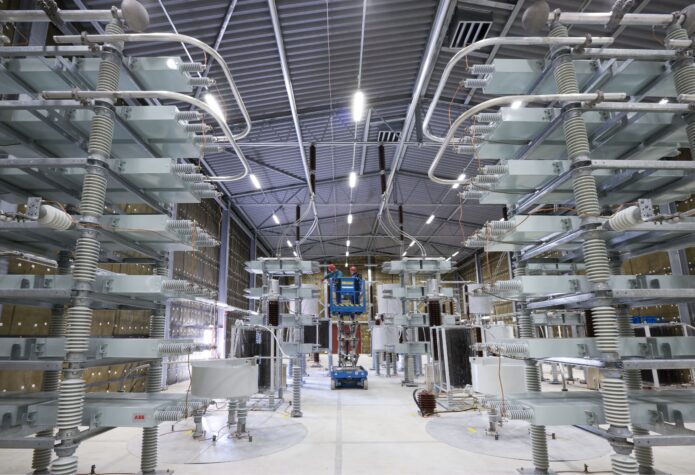Estlink-2 to tie Baltic power producers closer to the Nordic markets

In 2014, Estlink-2 will become the second high-voltage electricity transmission interconnection to join the Baltic electricity system with that of the Nordic countries and, thus, the rest of the European Union.
The new high-voltage power connection will be built across the Gulf of Finland between the substation in Püssi in north-eastern Estonia and the Anttila substation in Porvoo in southern Finland. Of the entire 170-kilometre length of the link, 145 kilometres will be laid as a submarine cable on the sea bed.
Once the new 650 MW link is in operation in 2014, the capacity of the interconnection between Estonia and Finland will increase up to 1000 MW.
“Building Estlink-2 is the first priority in Estonia’s energy economy for the security of supply of Estonia and the Baltic countries and to link the entire region to the Nordic area. It is also the largest investment made for the Estonian electricity system,” says Taavi Veskimägi, CEO of Elering OÜ.
The Estonian state-owned Elering is an energy transmission operator that hosts the Estlink-2 project on the southern shore of the gulf. In Finland, the project is being overseen by the national electricity transmission system company Fingrid Oyj.
Improved security of supply
After twenty years of independence, the Baltic countries still depend to a large extent on an older distribution network that ties them eastward, to Russia. Estlink-1, also financed by NIB and inaugurated in 2006, is currently the only power link between the Baltic energy system and the Nordic electricity network.
“The importance of both Estlink-1 and the upcoming Estlink-2 lies, primarily, in the improved security of electricity supply in the Baltic countries,” says Yngve Söderlund, Senior Manager at NIB’s Business Development Unit.
After the decommissioning of the Lithuanian Ignalina nuclear power plant started in 2009, and the closure of the old units at the Estonian Narva plants by 2015, the total energy generation capacity in the Baltic region will shrink 30% from its current size.
The new interconnection will increase the reliability of the Baltic power systems, while decreasing their dependency on the Russian power supply. Studies analysing the market-based benefits of the second interconnection between Estonia and Finland clearly show that the Estlink-2 will be socioeconomically profitable to the Baltic Sea region.
Creating future power market
The increase of the transmission capacity is one of the preconditions of the integration of the future power market between the Baltic countries and Nord Pool Spot.
“The links will allow for electricity trade and provides an alternative electricity purchase channel to cover potential deficits in generating capacity in the Nordic countries as well,” continues Mr Söderlund.
He stresses that a large and open electricity market in the Baltic Sea region is crucial for integration of more environment-friendly renewable energy, in particular wind power, into the system.
For the efficient use of opportunities in the Nordic market, the Baltic companies are looking forward to entering the Nordic regional energy exchange. The Nordic countries are the leaders in organising international trade of electricity and deregulating the electric power sector.
“The new cable will boost inter-regional transmission capacity and, after the completion of Estlink-2 and the adoption of Nordic market rules, it will be possible to speak of a common Nordic-Baltic electricity market starting from 2014,” says Mr Söderlund.
The additional link will enable Nordic electricity producers to enter the Baltic electricity market and the Baltic producers to sell electricity on a significantly bigger market. Mr Veskimägi of Elering explains:
“More producers, more interconnections, an open competitive market—all this means better electricity prices for consumers and industry and thus a more competitive economic environment in Estonia. Definitely, stepped-up competition will push the present sellers to make their activity more efficient and customer-friendly.”
Jukka Ruusunen, CEO of Fingrid believes that Estlink 2 is an important step in creating a common Baltic Sea energy network.
“It will provide an advantage to the entire region in increasing its energy supply and creating an even more efficient electricity market,” he says.
The total budget of the project is close to EUR 320 million. To facilitate the construction of Estlink-2, NIB has signed long-term loan agreements totalling EUR 45 million with Elering and Fingrid.
Mr Söderlund of NIB emphasises that the Bank is committed to promoting the integration of the Baltic power networks into the regional cooperation.
“This is in line with the Bank’s business strategy for the energy sector. NIB sees Estlink-2 as a key to securing energy supply and sustainable development for the whole Baltic Sea region,” concludes Mr Söderlund.
